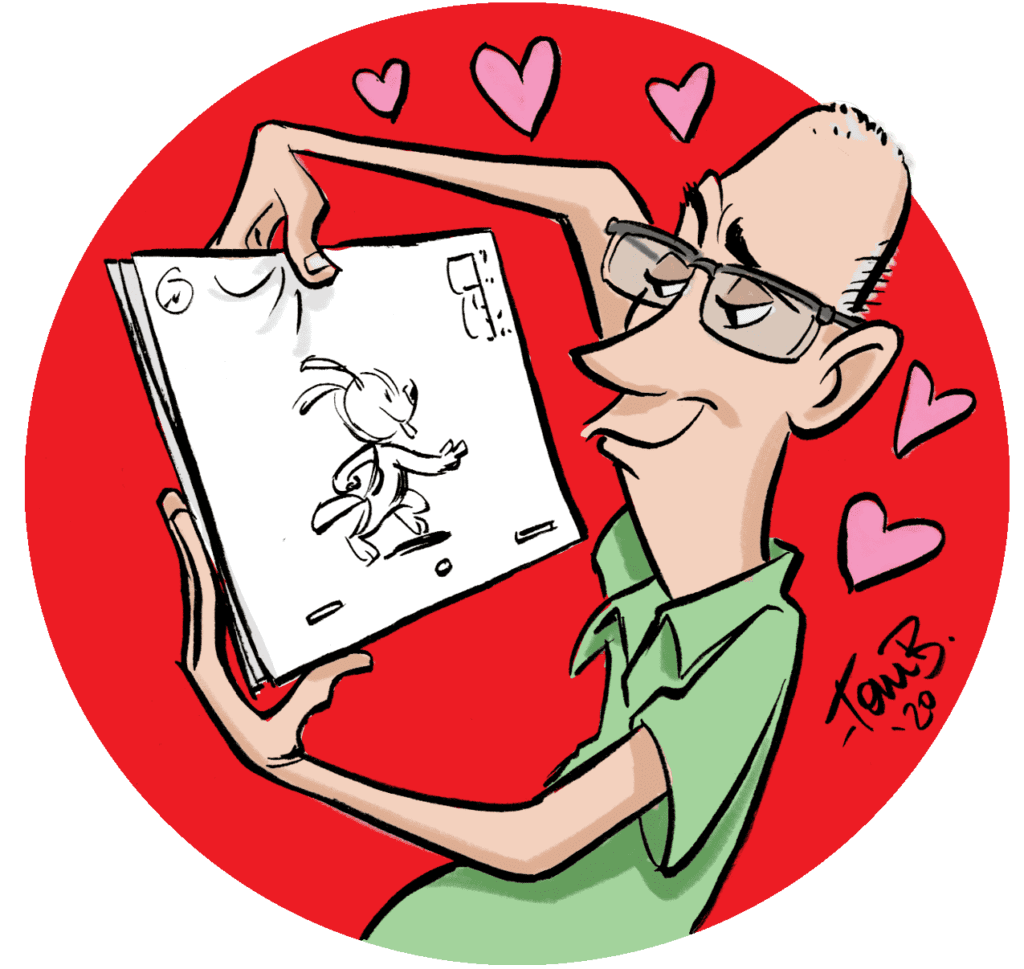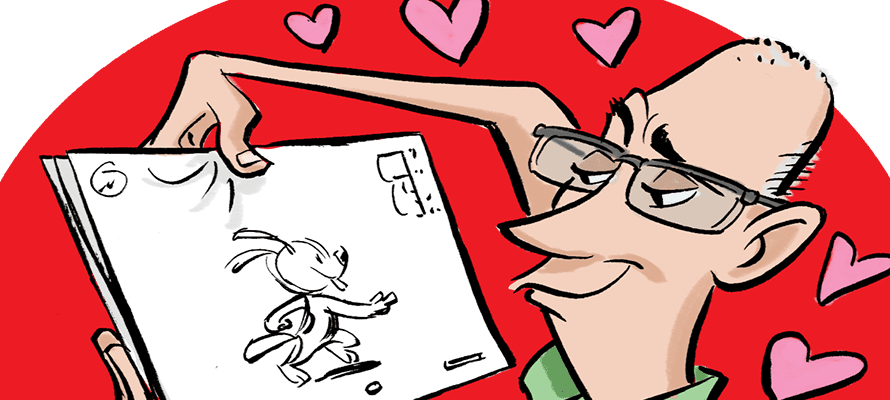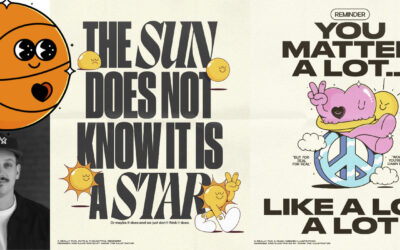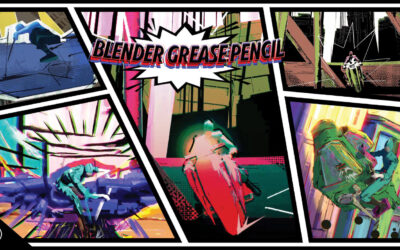Dies ist Teil 3 einer Reihe von "Dingen, die ich bei Disney gehört habe und die ich nie vergessen werde" von Tom Bancroft, einem 30-jährigen Animationsveteranen. Lesen Sie Teil 1 hier und Teil 2 hier.
Back in the early 90s, I was an eager young artist that had just gotten his first job in the animation industry: as an Assistant animator at Walt Disney Feature Animation at the age of 21. I had gone to California Institute of the Arts just months before that, been chosen for a Disney internship, passed it, and was now starting my career at Disney as supervising animator, Mark Henn’s clean up assistant. Mark was one of the top animators at Disney, and I was just out of school so to say it was an intimidating position to be in was an understatement. Honestly, I could draw okay, but I had never learned professional clean up much less done it to the level I now needed to.
To back up a little: “Clean Up” is a part of the traditional (2D animation) process that doesn’t exist (much) these days- especially in the world of computer animation. The job was to take the animation drawings (the scene) that an animator had just finished and lay a blank piece of paper over each drawing, starting with the key (most important) drawings, and redraw them tight, clean, and put them more on-model (making sure they look like the model sheet) when needed. And, not mess up the subtleties of the animation, of course. In that job, you couldn’t just trace over the drawings, you were expected to make them better and even fix problems in the animation (like smoothing out arcs between drawings). In short, you needed to know animation, draw well, and be able to replicate the character you were drawing from any angle. Oh, and did I mention I had just left art school? The crazy part that hit me early on was that Mark’s amazing, rough drawings that had so much life to them would be replaced with my stiff- lined, tight drawings and MY drawings would be what would get colored and go on the BIG SCREEN while HIS drawings would be thrown away or archived. Needless to say, Mark had a lot of mentorship to do with me to get me to where I wasn’t messing up all his work.
Das erste Projekt, das wir zusammen gemacht haben, war "Rollercoaster Rabbit", ein Kurzfilm von Roger Rabbit, der vor dem längst vergessenen Film "Dick Tracy" veröffentlicht werden sollte. Mark, der Mark ist, hatte die besten Szenen von Roger Rabbit zu animieren. Nachdem er einige animiert hatte, sagte mir der Produktionsleiter, dass einer genehmigt sei und ich aufräumen sollte. Ich hatte genug gelernt, um zu wissen, dass meine Aufgabe jetzt darin bestand, durch die Szene zu gehen und alle Schlüsselzeichnungen auszuwählen (bei Disney würde man normalerweise die Nummern der "Schlüssel"-Zeichnungen einkreisen, damit es klar war, dass es sich um eine wichtige Zeichnung handelte) und sie zu bereinigen. Ich saß am ersten Tag da und arbeitete von morgens bis abends. Dann tat ich es noch einmal. Zwei oder drei Tage später fragte mich Mark, wie es lief. Ich sagte, ich dachte, ich wäre bereit, ihm meine Schlüssel zu zeigen, damit er sie überprüfen kann. Er saß an seinem Animationstisch und legte seine Animationszeichnungen und meine entsprechenden Zeichnungen über seine auf seine Klammern, um sie auszurichten. Vier Zeichnungen? Wo sind die anderen, fragte er? Ich hatte noch keine anderen, ich hatte viele Stunden pro Stück mit diesen vier Zeichnungen verbracht. Ich wusste, dass ich langsam vorgehen würde, aber ich war auch stolz auf die Zeichnungen und bereit, dass die Komplimente nur so flogen.

Mark holte seinen Rotstift heraus und wies auf Ungereimtheiten zwischen seinen groben Zeichnungen und meinen straffen, sauberen Zeichnungen hin. Er holte ein weiteres schwarzes Blatt Papier hervor und begann, eines davon rot zu zeichnen. Er ließ es leicht aussehen und es war klar, dass jeder seiner Schläge besser war als das, woran ich mich abmühte. Dann nahm er meinen Aufräum heraus und warf ihn weg. Er sagte, ich bräuchte es nicht mehr, nimm einfach seine rote Zeichnung als Grundlage für eine neue und fange von vorne an. Mir schwirrte der Kopf. Er tat es immer und immer wieder. Ich verließ den Raum mit einem Viertel einer der Zeichnungen, die noch intakt waren. Achtzig Prozent von dem, was ich getan hatte, war im Müll und ich musste wieder von vorne anfangen! Ich fühlte mich krank, als ich mich wieder an meinen Animationstisch setzte. Ich war jetzt sehr weit im Rückstand und eine Deadline rückte näher.
Mark knew I was struggling and he came by my desk a little later. I apologized for messing up so badly but he didn’t flinch. He told me this is how he learned also. He began to tell me that he was trained by one of the Nine Old Men of Disney animation, Eric Larsen, who was known to be quick with the red pencil corrections. You couldn’t show him your work without being at his desk for hours as he taught and lectured. In the end, you would leave with much of your work in the trash and lots of new red line sketches by Eric to show you how it should have been done. Then Mark said the thing I’ll never forget, “Eric would tell us over and over again, ‘Don’t fall in love with your drawings.’ Mark told me that what that meant was that if a sketch is too precious that you can’t throw it away when it’s not working, then you’ll never grow as an artist. As a matter of fact, Mark didn’t use the eraser very much, he would just throw the paper away if the drawing wasn’t working. He’d grab a new page and keep going. All the animators worked that way because that mantra of not sticking with something that wasn’t working was so strong at Disney. The point was that there was always a better drawing in your pencil waiting to get out. Getting better and doing better was more important than pride. The side effects of this rule also created a work ethic- and drawing speed- that has helped me in my career ever since.
If you are going through erasers more than pencil lead, you’re erasing too much. Consider not trying to save a failing drawing but start over- you will start getting to a better result sooner.
NOTE: Yes, many trees suffered for those great Disney animated films but they did start recycling later in the 2000s.
About Tom Bancroft
A good overview of Tom Bancroft’s work can be found on his website. His Instagram, a good overview of his MerMay work, is @tombancroft1. The Bancroft Brothers Animation Podcast is hosted on his educational network Taught By a Pro. If you’re interested in the full scope of his work in the animation industry, check out his IMDB page.





